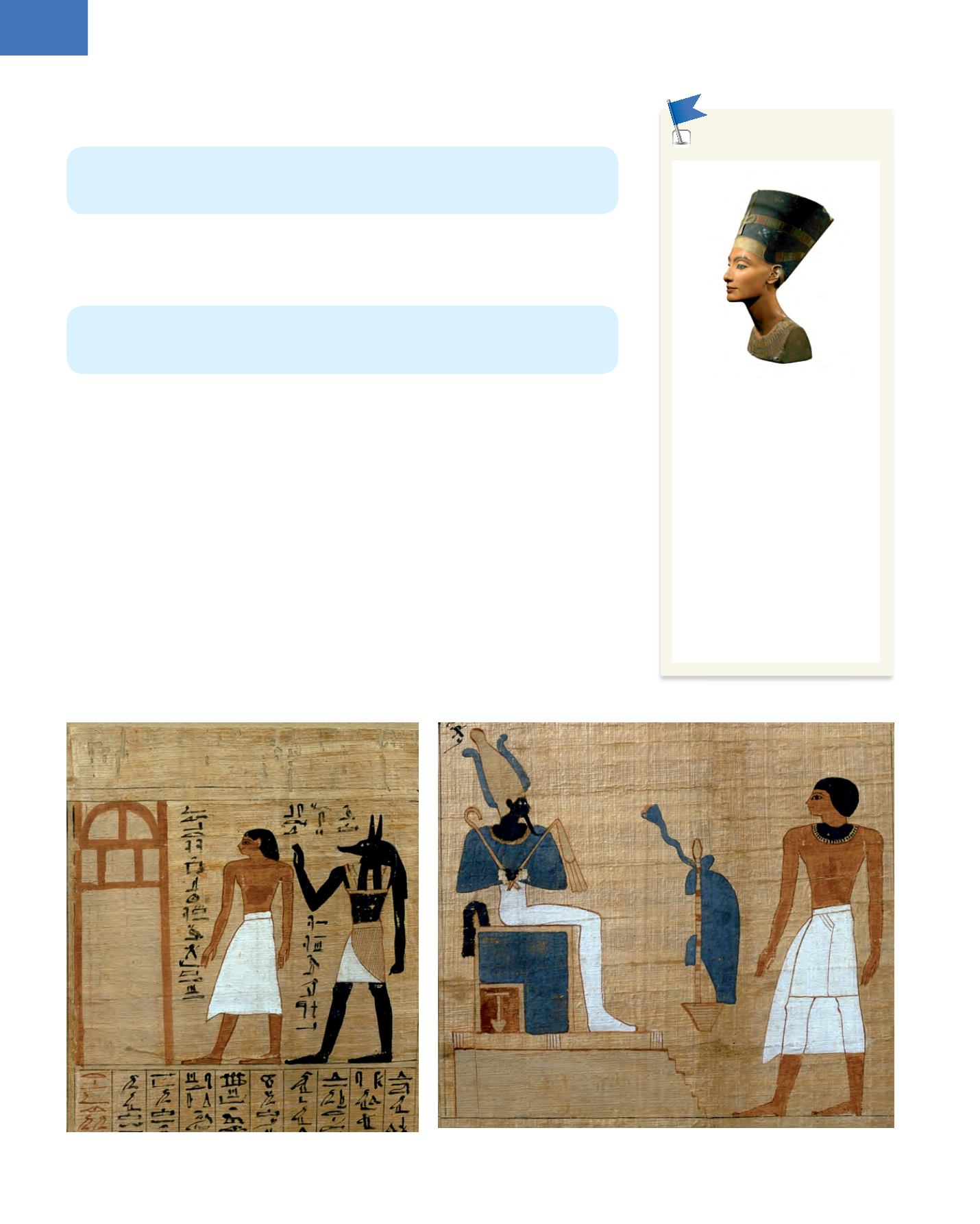
3
58
History
3.4. Culture and religion in Egypt
They invented the decimal numeral system (with 10 as its base), which we still use
today. The Egyptian calendar was based on the time that passed between the first and
second flooding of the Nile, that is a year with 365 days.
The Egyptians believed that after someone died, the god
Anubis
accompanied the
Ka
(the departed soul), across the serpent river and into the afterlife. The
Ka
had to pass
various tests and face the judgement of
Osiris
, during which their heart was weighed
to discover if they had sinned. A feather was placed on one side of the scales and the
heart of the deceased (dead person) on the other. If the heart was heavier, it was full of
sin and the deceased could not enter the kingdom of Osiris. If the opposite was true,
it lived eternally in paradise.
To ensure that the
Ka
returned to the body, the Egyptians
mummified
their corpses,
that is, they embalmed them so that the body would be as well preserved as possible.
The embalmed corpse, wrapped in linen was called a
mummy
. They extracted the
intestines and placed them in containers called
canopic jars
.
On sheets of papyrus, or on the tomb, they transcribed passages from the
Book of
the Dead
, a set of religious texts which helped the deceased pass the judgement of
Osiris.
A dead person is escorted by the god Anubis (left) to the trial of Osiris (right ). Detail of a sacred papyrus (Louvre Museum, Paris)
Important
The pharaoh Akhenaten
(Amenophis IV) and his
queen Nefertiti tried to end
polytheism and impose the
worship of a single god,
Aten (the sun god). The
pharaoh adopted the name
Akhenaten and built the city
of Akhetaten, in Amarna.
However, the priests who
served the god Amun-Ra
opposed him and after the
pharaoh died the situation
returned to how it was before.
!
The Egyptians, like the Mesopotamians, made important advances in
mathematics
and
astronomy
to predict the flooding of the Nile and increase agricultural
production.
The religion was
polytheistic
. Their gods often had a human body and the head
of an animal. Their appearance and characteristics varied over time. Each city had
its own patron deity.


